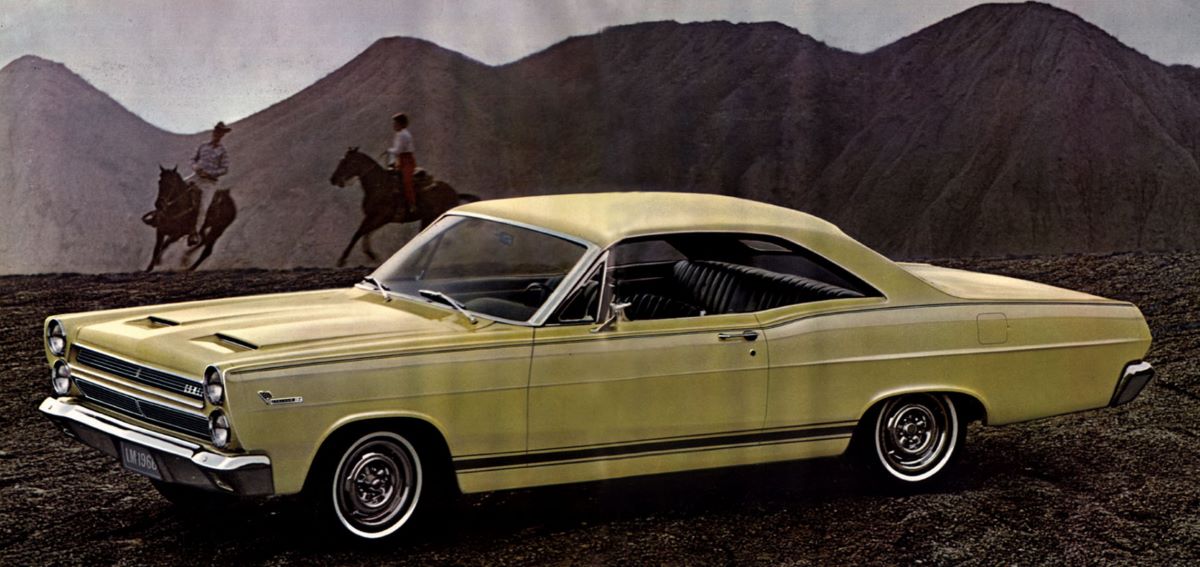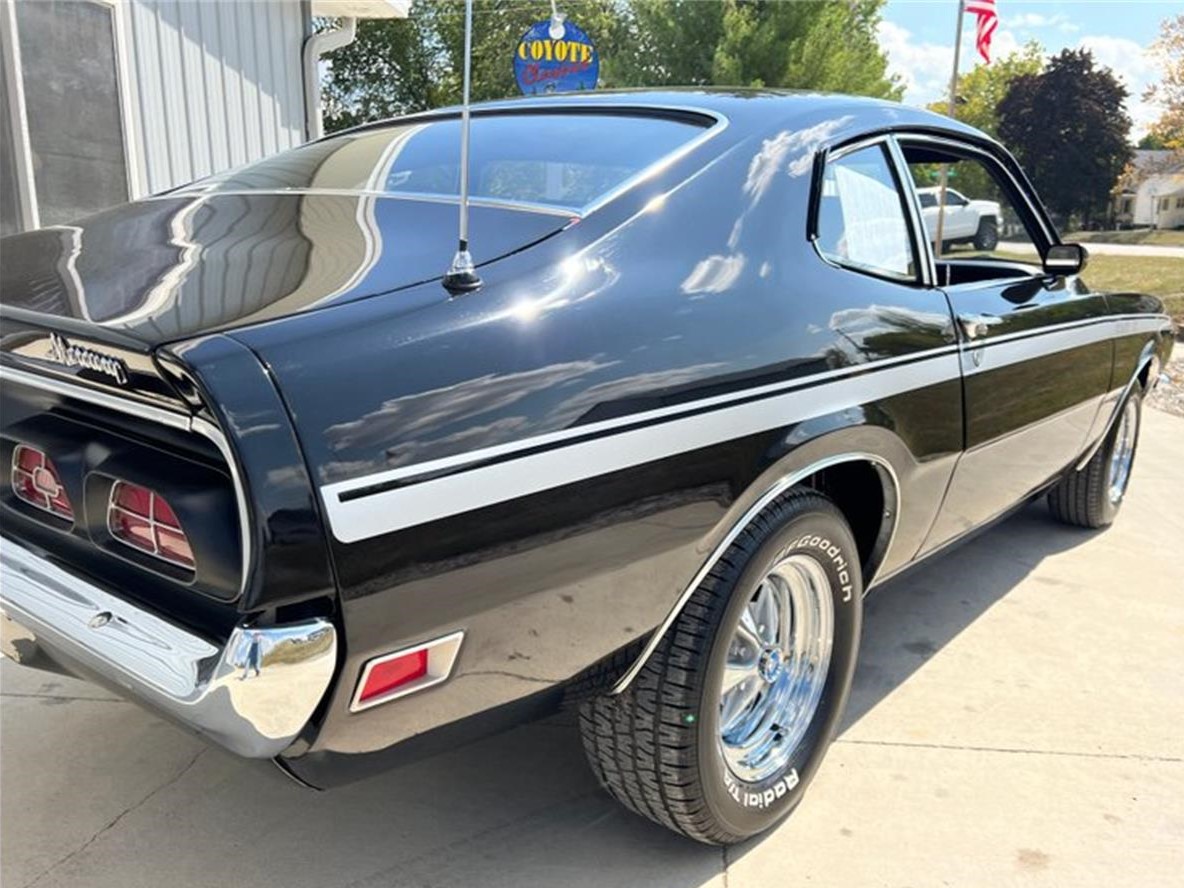The compact Ford Falcon was produced in the United States for 11 model years, then hopped on the mid-size platform for a half-year when it was discontinued. The Mercury Comet, on the other hand, went from compact to mid-sizer and back to compact, and the name had a longer duration than the Falcon to boot! Our Pick of the Day is the latter incarnation of this model, a 1972 Mercury Comet GT. It is listed for sale on ClassicCars.com by a dealership in Greene, Iowa. (Click the link to view the listing)
The original 1960 Mercury Comet is said to have been planned as an Edsel, but that didn’t pan out. What did pan out was a compact with less demure styling than the Falcon, as the Comet featured what could be considered big-car styling. A two-door sedan, four-door sedan, two-door wagon, and four-door wagon were the only body styles available, and in only one trim level and with only a straight-six. But, in 1961, Mercury introduced the Comet S-22 with bucket seats and console, an early adopter of the sporty trend along with the Falcon Futura. Through 1965, the Comet matured with more models and more engines (including small-block V8s).

Starting in 1966, with Ford’s redesigned mid-sized Fairlane, Mercury called its version the Comet and put its compact series to rest. The Comet was eventually absorbed by the Montego, with the last of the mid-size Comets appearing in 1969.

In April of that same year, Ford introduced the 1970 Maverick, a modern, new compact to replace the Falcon. Featuring semi-fastback styling and proportions not unlike a pony car, the Maverick was better prepared to do battle with the Japanese cars that were increasing in popularity at the time. In 1971, Mercury introduced its own version of the Maverick and christened it the Comet. The Comet name now had come full circle, starting as a compact and returning as a compact. Ironically, underneath, the 1971 Comet shared the same basic structure as the 1960 Comet.

Aside of the grille, taillights and hood, the Comet was identical to the Maverick. Body style choices were a two- or four-door sedan. Several inline-sixes and a 302-2V V8 were the powerplants of choice. A GT package was available only for the two-door sedan to create the Comet GT, which included color-keyed non-functional hood scoop, black-out grille, dual racing mirrors, bright window frames, side stripes, hi-back bucket seats, trim rings, and several other tchotchkes. It was a cosmetic thing because no fancy engine options were available, nor was a four-speed.

This rust-free 1972 Mercury Comet GT nicely demonstrates the sporty nature of this decidedly un-sporty car. Equipment was quite similar to 1971 other than the compression being lowered slightly. The 302 powering this Comet GT now features a four-barrel carburetor and other tweaks (including aluminum heads) to achieve 300 horsepower, which is backed by the original three-speed manual. Other modifications include aluminum radiator, aftermarket tach and gauges, and classic styled steel wheels. “Great gaps … painted floors, frame rails, and trunk,” says the seller.

This vehicle demonstrates how both the Maverick and Comet have been embraced by hot rodders: they’re lightweight, parts are plentiful and shared with other FoMoCo products, and you can do a lot that the factory did not. So why go with a Maverick when you can have the more unique Comet GT? For $42,995, you can find out.

Click here for this ClassicCars.com Pick of the Day.

Comments are closed